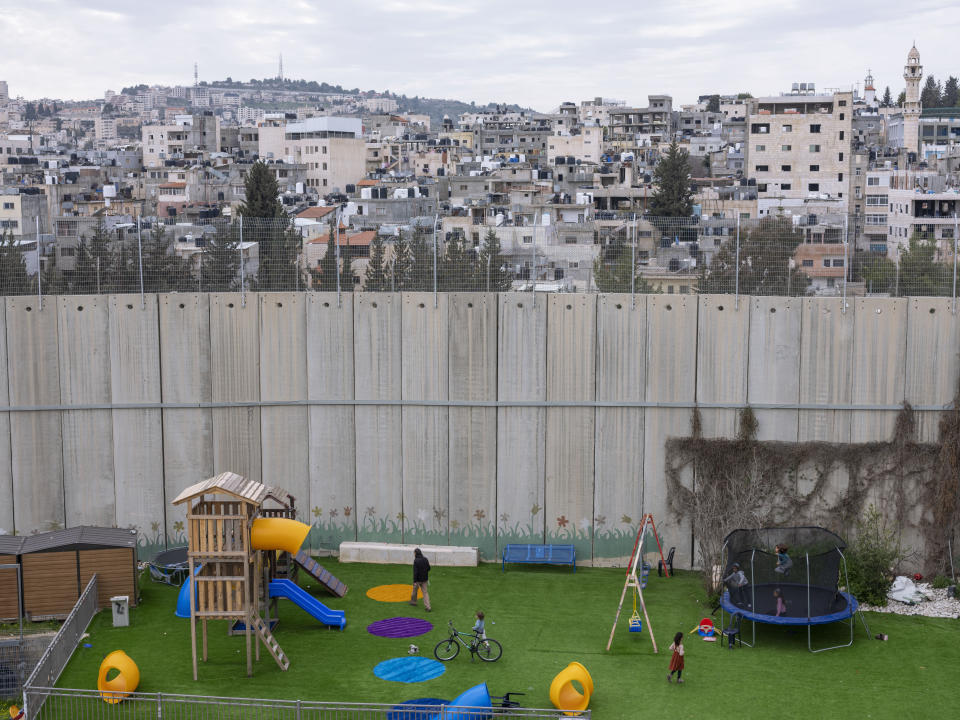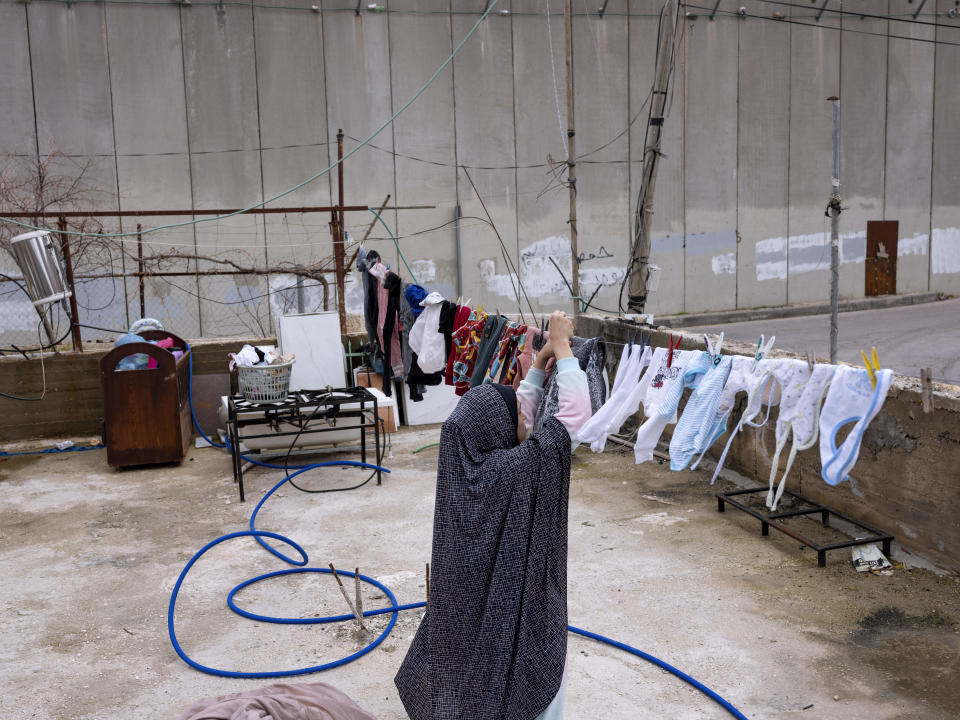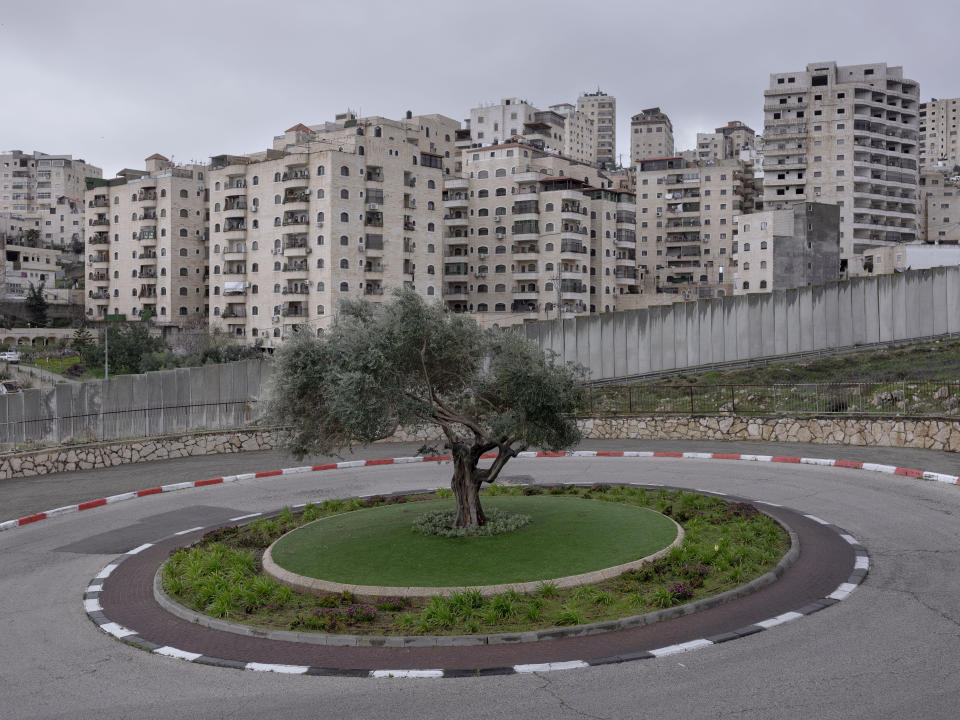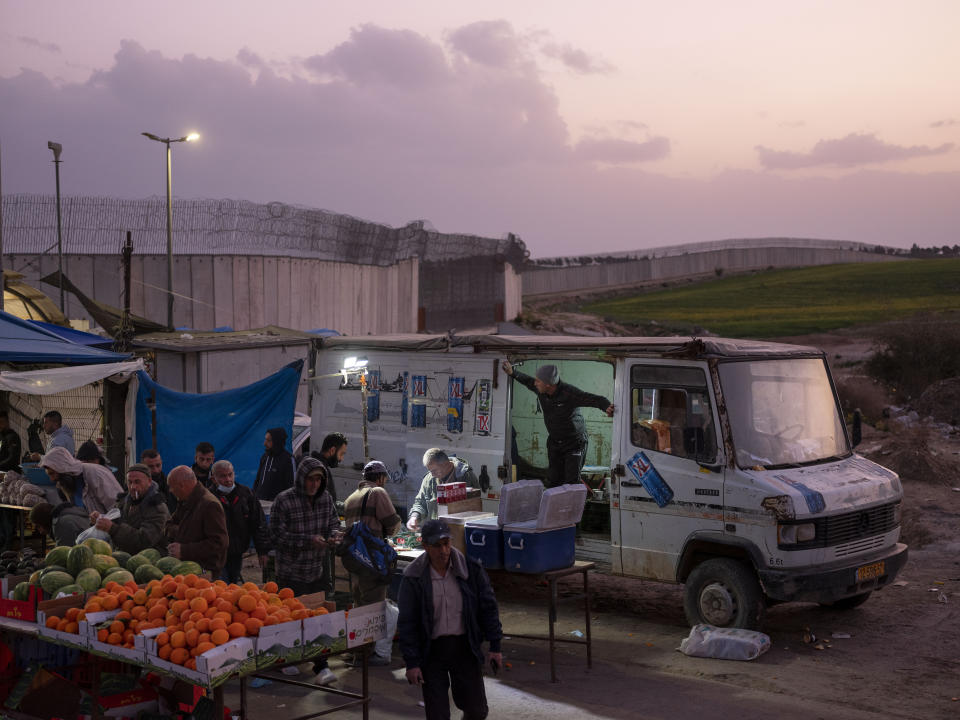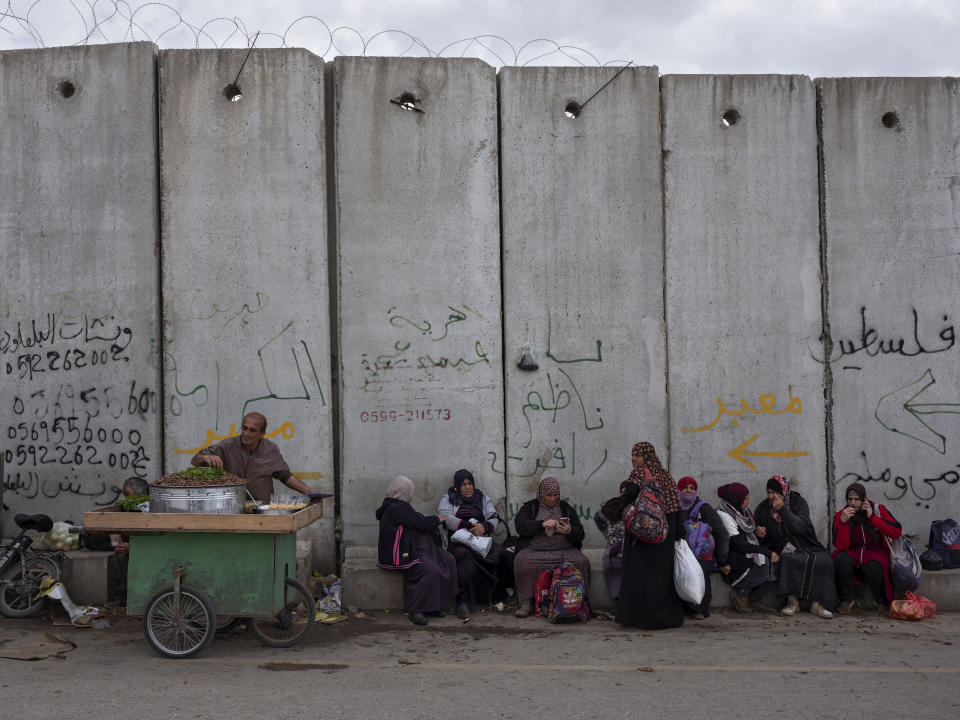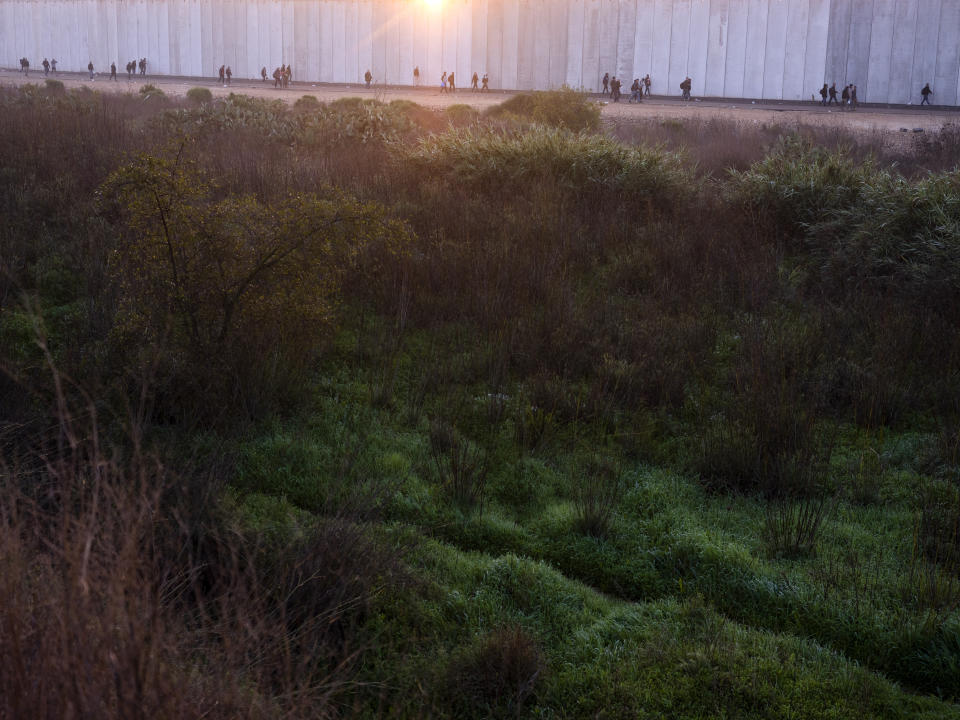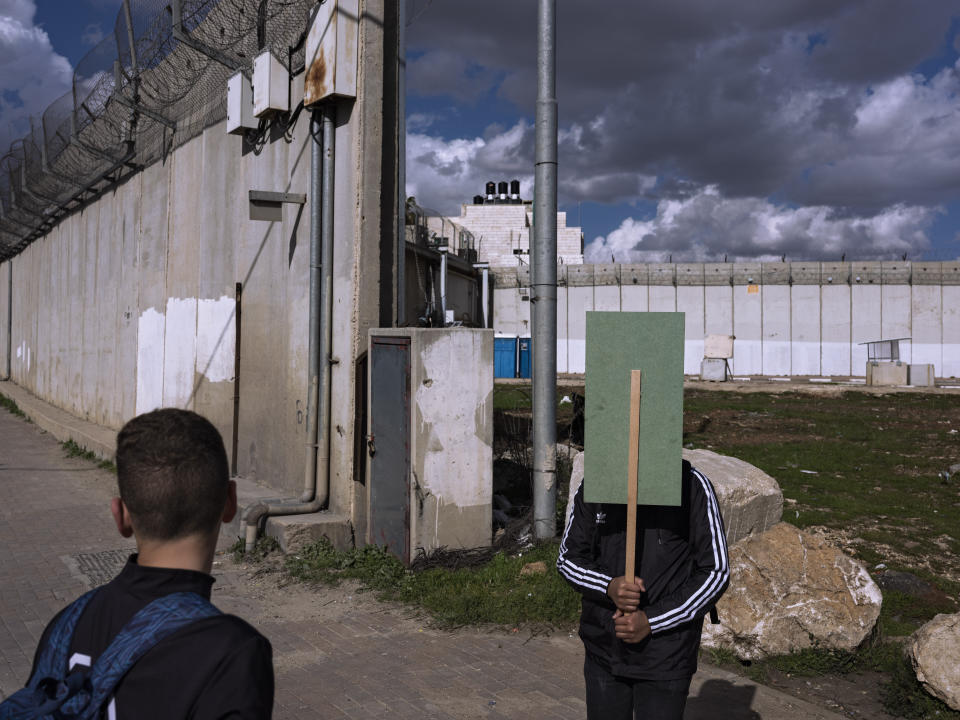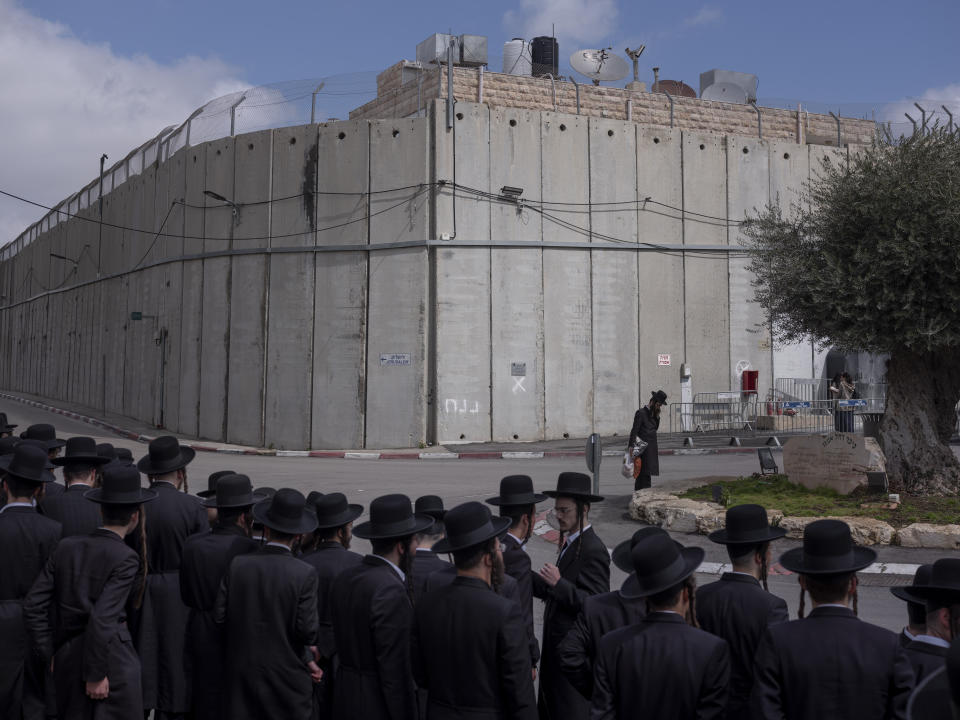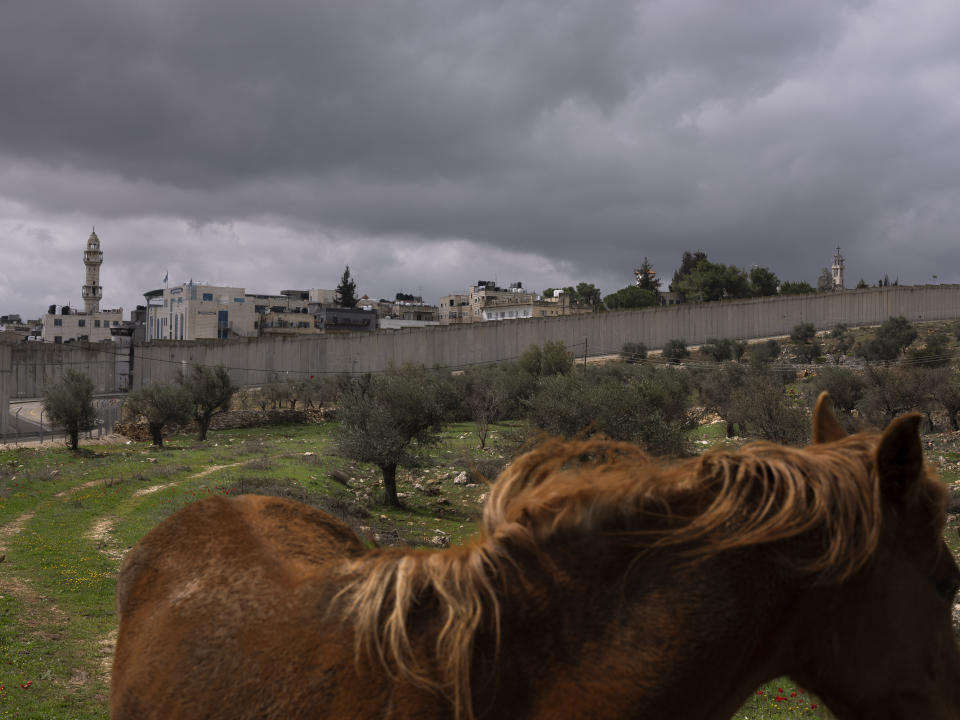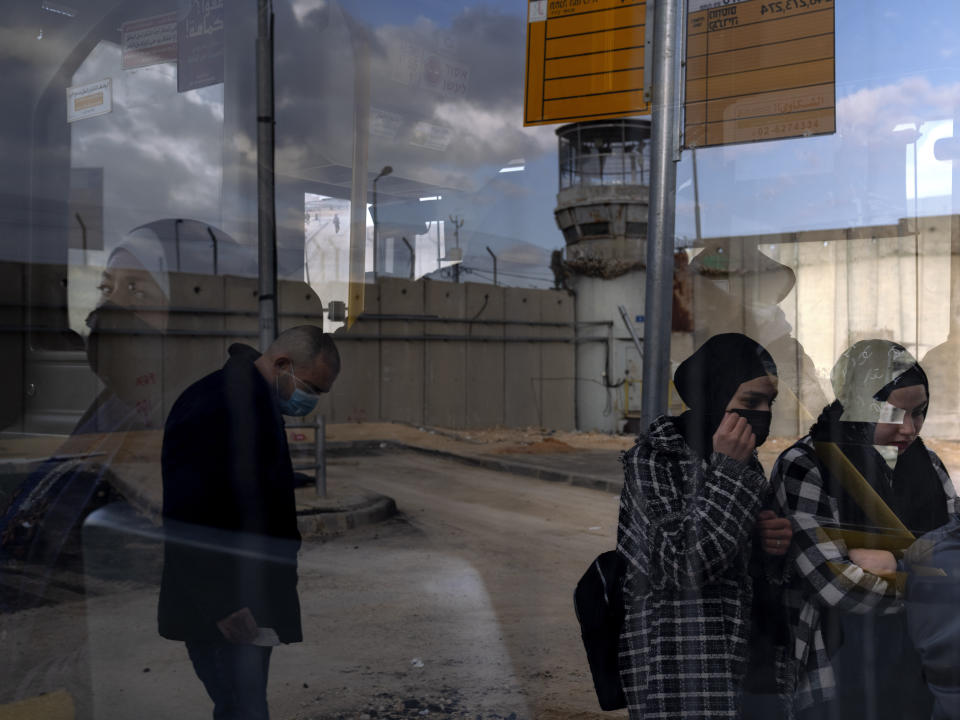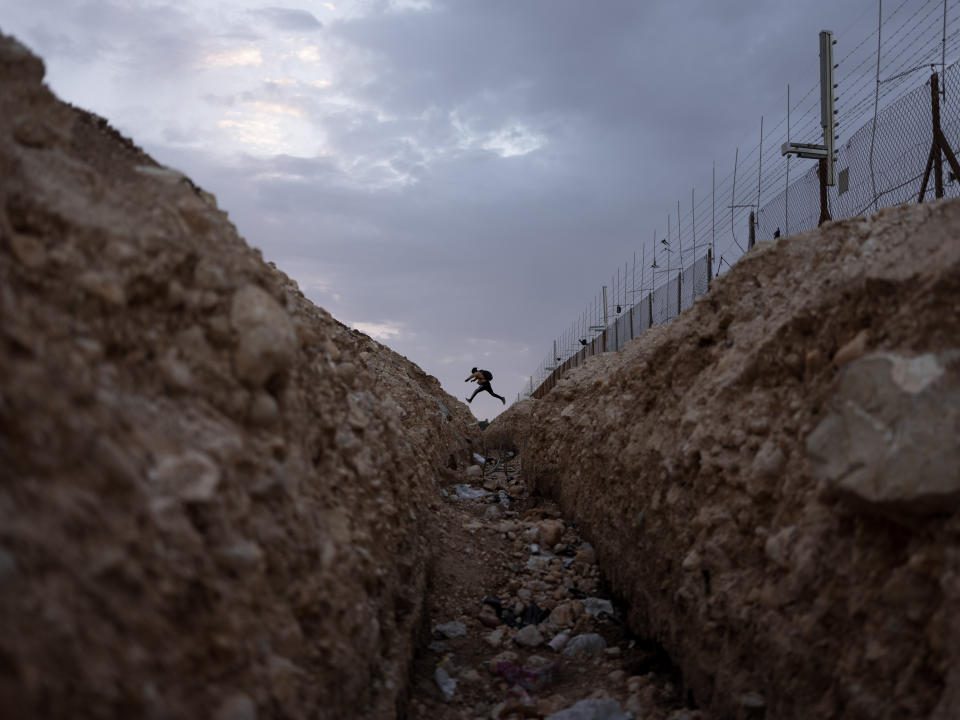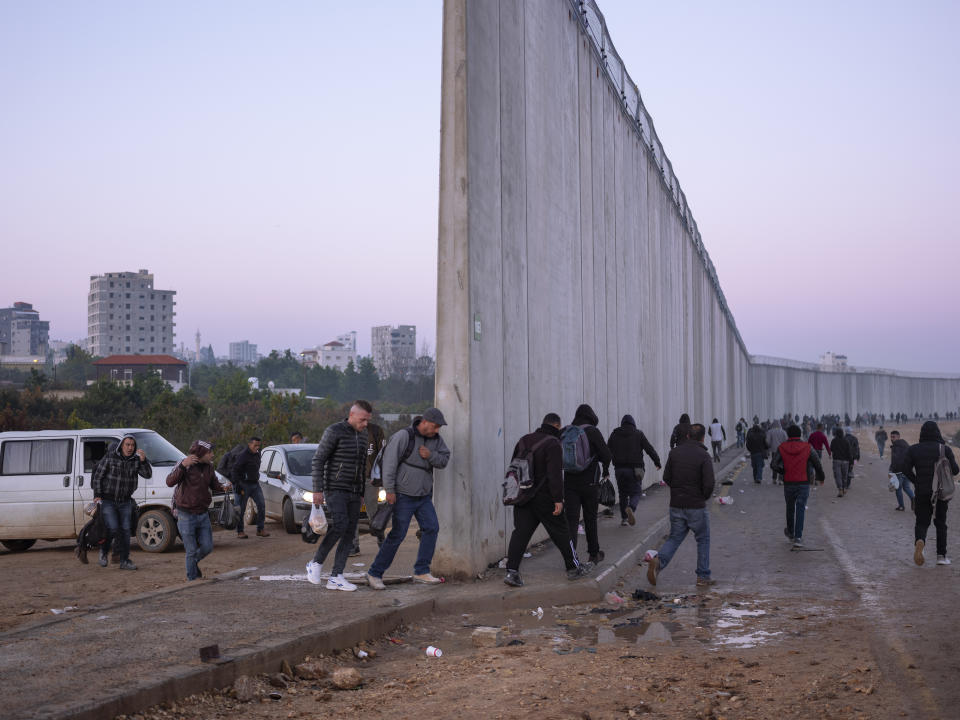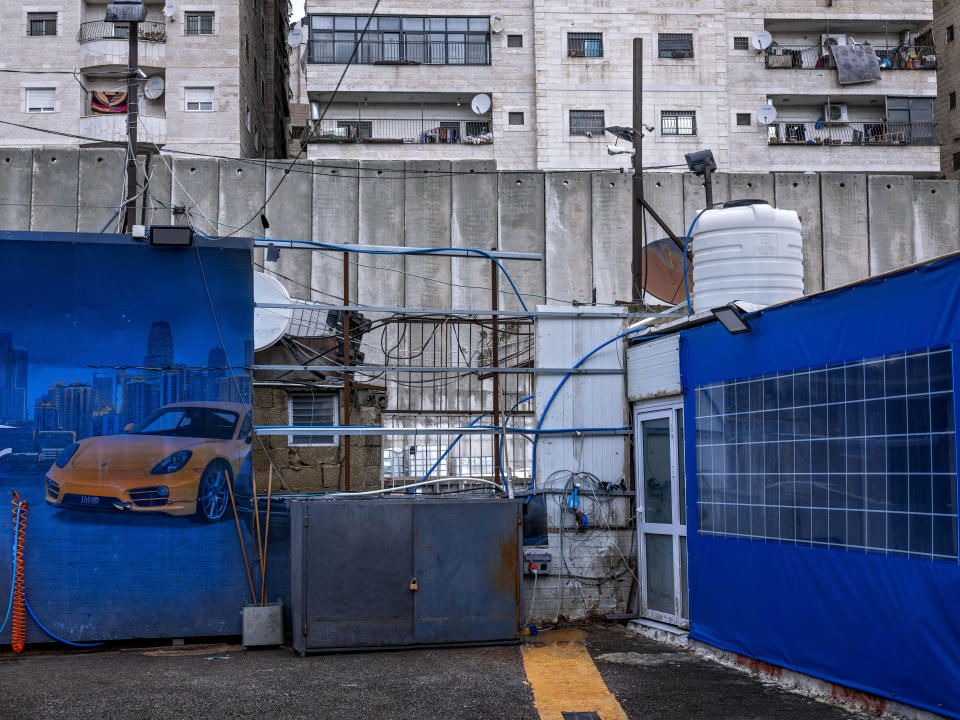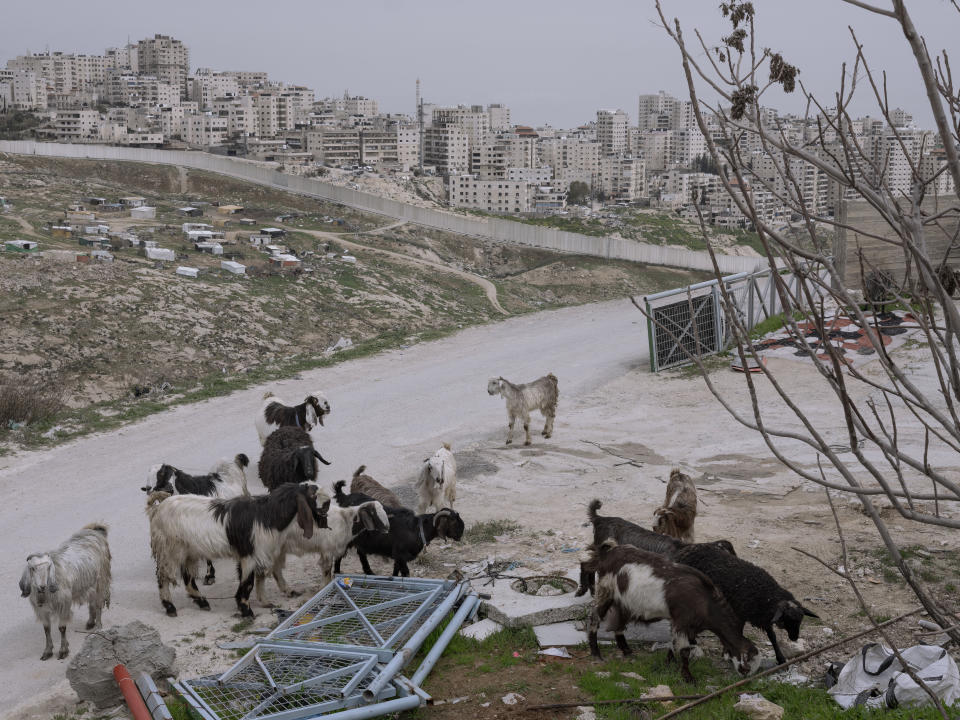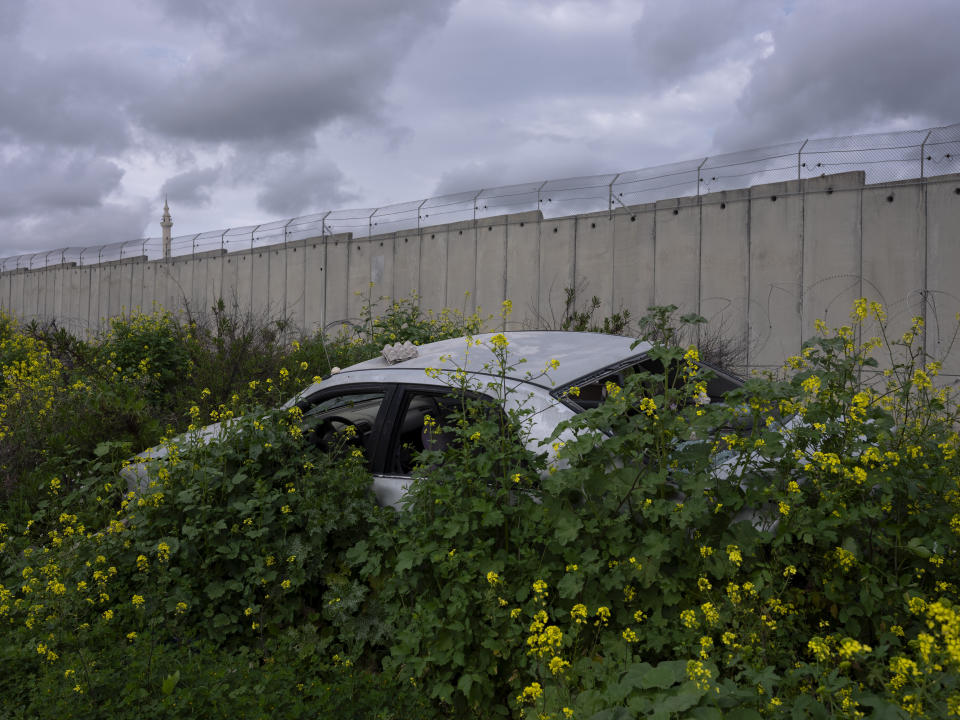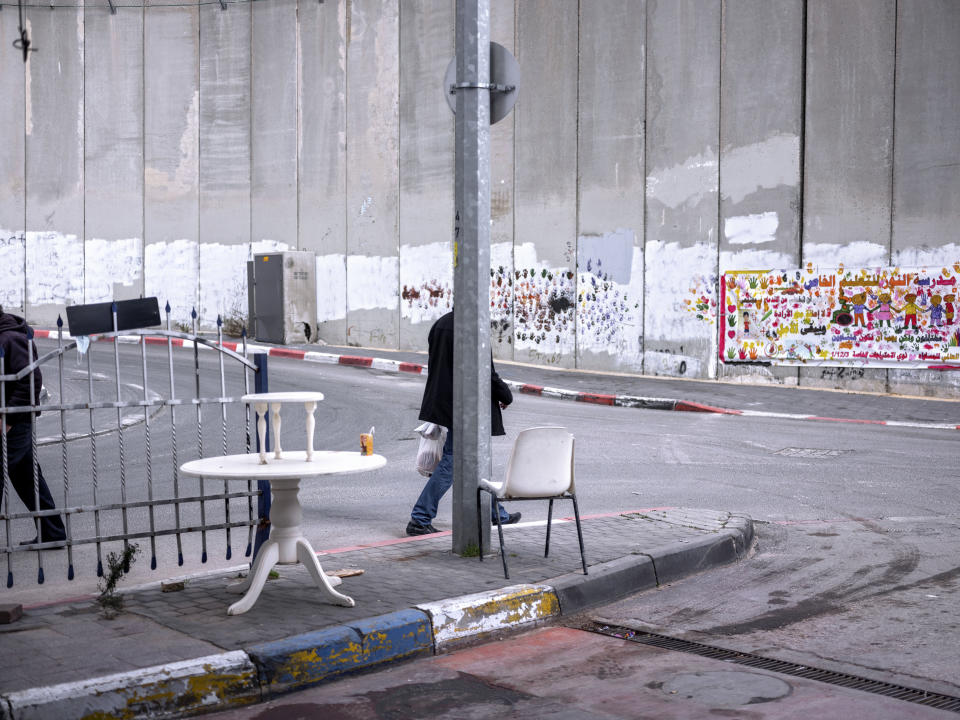Behind the Lens: Israel's separation barrier
Associated Press photographers talk about their 2022 assignments, and share some of the stories behind the images.
___
THE PLACE: West Bank
THE STORY: Israel’s separation barrier, 20 years on
THE PHOTOGRAPHER: Oded Balilty
___
ON CAPTURING DAILY LIFE AT AND NEAR THE SEPARATION BARRIER:
I was not looking for the conflict. I was not looking for this shocking moment that we usually have in the protests against the wall. Every Friday we have clashes next to the wall. I chose not to go to these places. I chose to show: How does it feel on a daily basis? And I think it’s more effective. I was trying to show life next to the wall but not necessarily what is happening because of the wall. The wall is just there. It’s there as effect. The wall doesn’t affect the situation in the photo. It’s not that people are climbing on the wall or trying to break it or that there is a gap they’re trying to go through. It’s markets, it’s people crossing into Israel, it’s trees that grow on the sidewalk. You need to find the right balance between to show that the wall is there and show the life that’s happening around it.
ON MAKING CHOICES AS A PHOTOGRAPHER NOW VS. YEARS AGO:
When you’re young, you want to be next to the action — next to where things are happening. The main difference between today and 20 years ago, when I was shooting the same topic is that when I started, I followed the events. I followed the situation. And today, instead, I’m choosing what to show. There is a big difference as a photographer between being invited somewhere to shoot something that someone else is doing, and going somewhere where nothing is really happening and creating something and showing it in your own way.
ON MAINTAINING A SENSE OF CURIOSITY IN HIS PHOTOS:
It’s important to give facts and to follow the facts. But I like to be a little bit more open-ended. I think readers like it even more. They can read it with some question marks sometimes. Sometimes I like to give more question marks than answers. Because I think those are the images that that attract the attention of the reader the most.
When someone is looking at a photo, and he’s asking himself “What's happening here?", as long as he says once to himself the word “why” or “what” or “how,” he’s taking himself deeper into the story. So I always like to include, in some stories, one or two photos where not everything is clear — to create this feeling of mystery. To drag you in. And that’s important in the editing and the in the way I like to shoot. I like this like hide-and-seek kind of thing in the photography. And especially with the story of the wall, the hide and seek, it’s a big part of that story. You will always want to see what is happening on the other side. There are a lot of hidden parts behind the wall in the photos. So this mystery is always there.
ON THE WALL AND ITS PRESENCE:
That’s the main feeling that I wanted to have in the story — that it’s here. It’s part of the life. It’s part of the landscape. People are getting used to it. I think that today the wall is more of a mental obstacle for Palestinians than actual physical obstacle. Because it’s not really difficult to cross the wall. They do it every day — walkers going through gaps in the walls. Car thieves that steal cars from Israel into the West Bank. That the wall itself, it’s there and it’s put boundaries in place. But I think after 20 years of it being there that it's more mental barrier than physical.
— Interview by Leslie Mazoch
